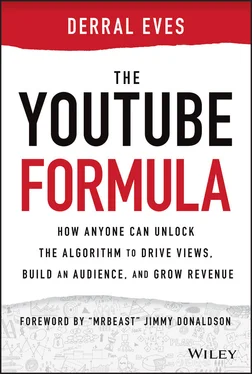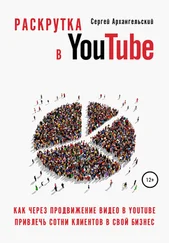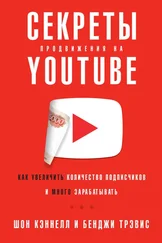Another vital piece to the reboot was utilizing deep learning machines. Google's AI had undergone several phases of development and usage, and it was getting better and better. Google's deep learning AI was now capable of using gigantic neural networks that got really good at things like recommendation and search. Deep learning goes beyond basic machine learning in that it's built to mimic human neural networks. It makes nonlinear conclusions.
The input data for deep learning machines on YouTube came from the behavior of its users and monitored not only “positive” viewer behavior, like which videos they liked and kept watching, but also “negative” behavior, like which videos they skipped or even removed from their custom Homepage or “Up next” recommendations from YouTube. Monitoring both the positive and negative behavior of its users is vital to the algorithm's accuracy. This neural network has gotten so good that it can even predict what to do with new or unfamiliar videos based on current user behavior. Saying, “It has a mind of its own,” is not much of a stretch. The AI actually doesn't observe the total Internet behavior of a user; it only watches what happens on YouTube. This matters because it's what maintains its pinpoint accuracy in recommendations.
How?
Let's say you went to google.comand typed “steakhouses in Los Angeles” in the search bar. Does that mean the next time you go to youtube.comyou want it to recommend videos on how to grill a perfect steak? Or that you want to take a video tour of LA? Probably not. But if you search, “How to grill the perfect rare steak,” directly on YouTube's search bar and click on the first recommended video, the suggested videos that pop up next might be, “World's strongest man—full day of eating,” then, “How to clean a cast iron skillet.” These secondary videos don't have anything to do with steak, but do you see how that viewer would be a likely candidate to continue clicking? That's a deep learning machine that knows what it's doing. And YouTube and its ecosystem are direct benefactors, because when viewers watch more, everyone makes more money and gets more brand exposure.
A Machine at Work … and It's Working
YouTube recommends hundreds of millions of videos to users every single day, in dozens of different languages, in every corner of the world. Their suggestions account for 75% of the time people spend on the site.
In 2012, daily watch time averaged out at about a hundred million hours. In 2019, that average sits at a mind‐blowing one billion hours a day. One billion hours of video content being collectively consumed by viewers on one website every single day! Over this seven‐year span and thousands if not tens of thousands of tweaks and triggers, the deep learning AI has gotten really good at recommending videos to keep viewers watching longer. It has become an expert digital gardener who knows which product to harvest for each customer based on the videos they've been “feeding” on. You can be a YouTube master gardener, too, when you arm yourself with the right tools. Just hang on to your shovel, because we are still breaking ground.
4 The Algorithm Breakdown
You just learned a lot about the history of the systems that have run YouTube since its inception, and you know that those systems have become quite good at what they do. But what does that mean literally? When you go to the website, what do the systems look like as you navigate? To really grasp these foundational concepts, let's clarify what is actually happening when a site visitor shows up.
As soon as visitors arrive at youtube.com, they are being followed. It's like when you were a kid and went to your friend's house to play and their pesky kid brother just wouldn't leave you alone, but think of it this way: instead of being pesky, the brother quietly observes your behavior and accommodates your every whim. You want a snack, so he runs to the kitchen and returns with an apple. You say, “no thanks.” So he takes the apple back and returns with a bag of Cheetos. You eat the Cheetos. Then you have a conversation about Han Solo, so he runs to the living room and plays The Empire Strikes Back for you. The next time you go to their house, as soon as you walk through the door he hands you a cookie and turns on Return of the Jedi . His prediction about what you might want to eat or watch is based on the last time you came over, and it's probably spot on. Oh, and also, you're probably going to want to go to their house more often with this kind of treatment. They know what you like. (Unless he recommends The Last Jedi or Solo , in which case you'll just go to the Zuckerbergs' next time because those movies stink.)
Let's say that in place of Cheetos, you wanted carrot sticks, and in place of Star Wars , you watched The Office reruns. The next time you showed up, li'l bro would offer broccoli and Parks and Recreation . The concept works no matter your preferences.
These examples help explain YouTube's goals:
Predict what the viewer will watch.
Maximize the viewer's long‐term engagement and satisfaction.
How they do it is broken into two parts: Gathering and Using Data, and Algorithms with an “S.”
Part 1: Gathering and Using Data
YouTube collects 80 billion data points from user behavior every single day. They gather data in two key areas in order to achieve the goals of the AI. The first area it observes is user behavior via metadata. It determines things about a video based on the behavior of the person whose eyes are on the screen and whose fingers are doing the clicking. “Satisfaction signals” train the AI what to suggest or not. There is a very specific list of these signals:
Which videos a user watches
Which videos they skip
Time they spend watching
Likes and dislikes
“Not interested” feedback
Surveys after watching a video
Whether they come back to rewatch or finish something unwatched
If they save and come back to watch later
All of these signals feed the Satisfaction Feedback Loop. This loop is created based on the feedback the algorithm is getting from your specific behavior. It “loops” the types of videos you like through its suggestions. This is how it personalizes each user's experience.
To really get down to the details, here's an explanation for exactly how the AI gathers data. Observing metadata starts with the thumbnail. The YouTube AI uses the advanced technology of Google's suite of AI products. It operates a program called Cloud Vision (CV). CV uses optical character recognition (OCR) and image recognition to determine lots of things about a video based on what it finds in the thumbnail. It takes points from each image in the thumbnail and, using billions of data points already in the system, recognizes those images, and feeds that information back into the algorithm. For example, a thumbnail including a close‐up of world‐renowned physicist Stephen Hawking's face is recognized as such in CV, so that video can be “grouped” in the suggested feed along with every other video on YouTube that has been tagged under the Stephen Hawking topic. This is how your videos get discovered and watched.
In addition, CV utilizes a “safety” tool that determines, based on the data it has gathered from the images in your thumbnail, if your video is safe for all audiences to watch, or if it has adult themes, violence, or other questionable content, and it gives a “confidence” score of that determination. This score also reflects how accurately the content matches what the thumbnail shows. This means that you can create a thumbnail, plug it into Cloud Vision, and know before you finalize your video upload how the thumbnail will likely be rated in the system. Using Cloud Vision can help catch something that might, for whatever reason, be flagged as inappropriate on any data point, and therefore can give creators the opportunity to fix it even before it is live. This has cut down on demonetization and other issues creators have had in the past. It can be a very valuable tool to help you stay one step ahead of the problems. CV is not an exact replica of YouTube's safety measures, but it is close enough that creators can get a good idea of how the content will be determined by YouTube. CV might tolerate something YouTube will not, but it is still a sufficient prelaunch tool to utilize.
Читать дальше












